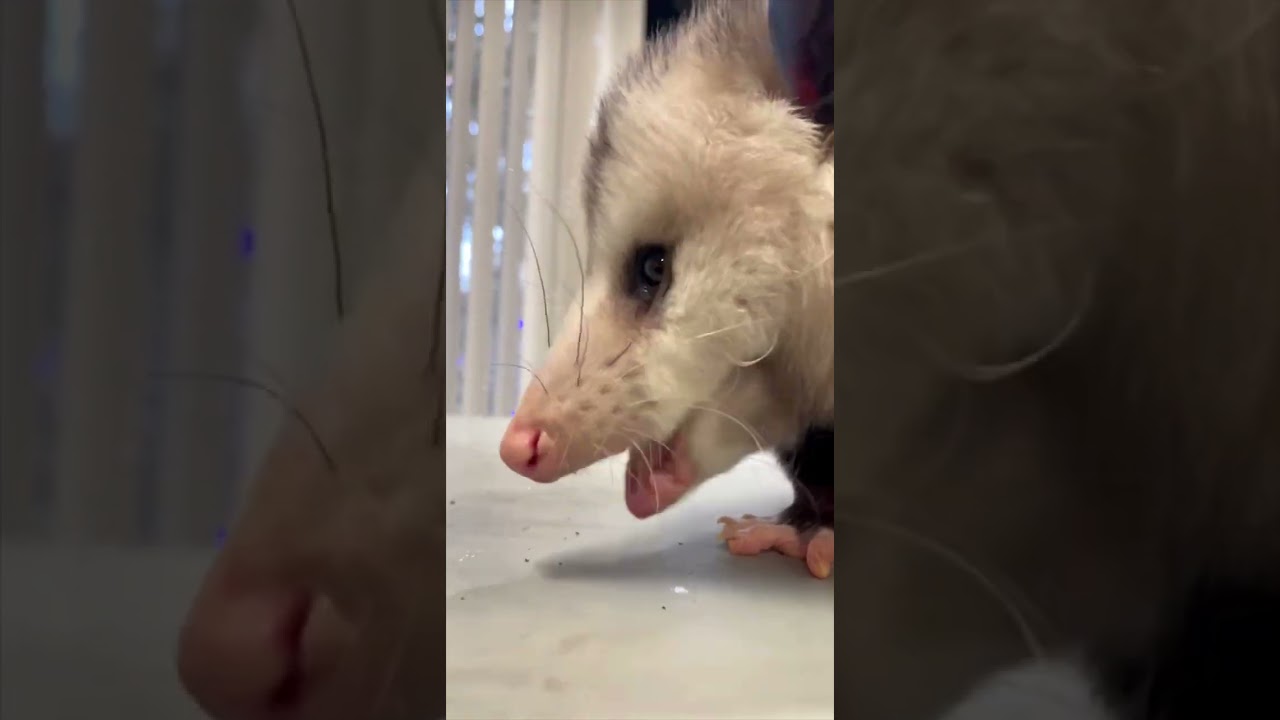- Exploring the behavior and nutritional habits of opossums at the Cincinnati Zoo.
- The educational significance and public engagement value of the Opossum Snack Time video.
- The role of zoos in wildlife conservation and the promotion of biodiversity.
- Understanding opossums’ ecological significance and adaptations in the wild.
- Zoo management strategies for enhancing animal welfare and visitor experience.
Observing wildlife behavior is one of the most intriguing aspects of zoology, and the Cincinnati Zoo’s “Opossum Snack Time” video provides an insightful glimpse into the feeding habits of these marsupials. Opossums, known scientifically as Didelphimorphia, are North America’s only marsupials and play a significant ecological role. The Zoo’s creative educational content, such as this video, not only engages the public’s interest but also serves as a tool for conservation education. This article dives into the various aspects of opossums, their behavior, and the broader implications for wildlife conservation and zoo management.
Opossums at the Cincinnati Zoo demonstrate interesting behavior patterns related to their diet. These creatures are primarily omnivorous, with a diet consisting of fruits, insects, small animals, and carrion. Their adaptable feeding habits are an evolutionary success story. During the video, one can note the opossums’ methodical approach to eating. This reveals their refined motor skills and instinctual behaviors that have developed over millennia to aid in survival.
The “Opossum Snack Time” video exemplifies how zoos like Cincinnati Zoo use media to educate the public on less well-known species. Educational content, particularly in video format, can capture the public’s attention more effectively than static exhibits. By showcasing small, daily rituals or behaviors, such videos mimic naturalistic settings and allow viewers to connect with animals on a more personal level. Such content proves vital for increasing awareness around species that might not be conventionally charismatic but are critical to biodiversity.
Zoos serve as both custodian and educator of biodiversity. The Cincinnati Zoo, among many others globally, plays a pivotal role in the preservation and understanding of various species, including opossums. Zoos must balance public engagement with conservation priorities, often working with researchers to participate in breeding programs, habitat restoration, and educational outreach. Through insightful and engaging video content, zoos can emphasize their role in saving species from the brink of extinction and introduce conservation principles to a broader audience.
Opossums provide valuable ecological services in their native habitats. They act as scavengers, helping to keep environments clean and preventing the spread of disease by consuming carrion. Furthermore, they’re known to eat ticks, reducing the spread of Lyme disease and other tick-borne illnesses. Adaptations such as immunity to certain snake venom allow them to thrive in diverse environments, highlighting nature’s ingenuity in shaping resilient creatures.
Zoo management practices play a critical role in both animal welfare and visitor experience. Facilities like the Cincinnati Zoo adopt various strategies to enhance the well-being of animals in their care. This involves maintaining enclosure designs that simulate natural habitats, providing enrichments to stimulate mental and physical activity, and monitoring health and dietary needs closely. Such efforts ensure that the animals are not only physically healthy but also behaviorally enriched, an aspect highlighted when showcasing behaviors like “Opossum Snack Time.”
This balance is met with educational goals. Ensuring the public can engage with wildlife in meaningful ways often requires innovative solutions. Videos that capture candid moments of animal life are just one method employed to convey complex scientific messages in easily digestible formats. These efforts help convey the message that every species, no matter how small or seemingly insignificant, plays a part in the global tapestry of biodiversity.
With the rapid decline of wildlife populations worldwide, the conservation of species such as opossums in managed care settings becomes crucial. Zoos act as modern arks that harbor genetic diversity that might one day be reintroduced into the wild. The knowledge gained from studying zoo-housed animals supports field conservation efforts, offering insights into breeding, health, and behavior that can inform wild population management.
The impact of content like “Opossum Snack Time” extends beyond education and into the realm of conservation advocacy. People who form connections with animals are more likely to engage in conservation efforts, support policies that protect habitats, and contribute to organizations working to alleviate threats to biodiversity. Educational initiatives by zoos are stepping stones toward broader awareness and involvement in conservation actions.
In sum, the Cincinnati Zoo’s “Opossum Snack Time” video does more than entertain—it provides a window into the life of a fascinating creature, encapsulating the essence of what zoo-based conservation seeks to achieve: the preservation and appreciation of wildlife. In understanding the role and habits of opossums, we gain insights not only into their natural histories but also into the broader ecological contexts in which they reside. The zoo’s work stands as a testament to the commitment to education and the enduring significance of wildlife conservation.
*****
Source Description
This great video is brought to you by Great American Insurance Group. #shorts
http://support.cincinnatizoo.org/donate
Subscribe: https://www.youtube.com/user/CincinnatiZooTube/featured
Facebook: https://www.facebook.com/cincinnatizoo/
Twitter: https://twitter.com/CincinnatiZoo
Instagram: https://www.instagram.com/cincinnatizoo/
Find out more at http://www.cincinnatizoo.org


